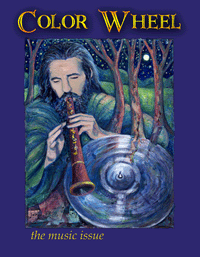Steve Diamond

Steve Diamond died on February 4, 2006 following a heart attack. He was 59 years old. Diamond, an author, activist, and journalist, was living in Santa Barbara, a community that he had come to love and call home.
Steve was born on December 7, 1946 in the Republic of Panama where he spent his early years. He said that if he had been born a girl his mother would have named him Pearl to commemorate the attack at Pearl Harbor, which had taken place five years earlier on his birth date. He attended secondary school at Blair Academy in New Jersey and college at Columbia University, where he was actively involved in the college newspaper and was one of the first editors to be fluent in Spanish.
At the time, he also started working for Liberation News Service (LNS), a news service, like an alternative Associated Press, for the rapidly expanding underground and college newspapers that were springing up during the late 1960s. He covered the student strike at Columbia University in 1968 and as a LNS reporter he was allowed into the student occupied buildings. His stories about the strike and subsequent police riot received nation wide exposure.
In August 1968, in the midst of a faction fight at the news service, Diamond, along with other members of the LNS group, bought the old Ripley Farm on Chestnut Hill in Montague, now the site of the Zen Peacemakers Conference Center. This story was recounted most memorably by Ray Mungo in his book Famous Long Ago that is soon to be a major Hollywood motion picture. The farm version of the news service did not survive the first winter, but Steve and the other members of the commune pursued their journalistic, artistic and activist interests.
Steve wrote What the Trees Said, which described the first year of life on the farm for the group of transplanted urbanites. The book was widely translated and while out of print still has a devoted following. Kurt Vonnegut called What the Trees Said "the most honest account of life on a commune that we have had to date. And he tells of a commune's response to the most shocking disaster possible; the unexplained suicide of the brilliant young founder of the commune."
His later novel Panama Red describes the fictional events that take place when Panama decides to legalize marijuana.
Diamond also worked as a writer and consultant for many years with Green Mountain Post Films, a Montague based company. Some of the award winning documentary films to which he contributed were: Voices of Spirit, a look at Elwood Babbitt, a local trance medium; Lovejoy's Nuclear War, an examination of Sam Lovejoy's anti-nuclear act of civil disobedience in toppling a utility meteorological tower; The Last Resort, about the fight over the Seabrook Nuclear Power Plant; Save the Planet, which was shown at Madison Square Garden for five nights during the Musicians United for Safe Energy (MUSE) Concerts which featured Bruce Springsteen, James Taylor, Bonnie Raitt, Jackson Browne, and many other artists; Cannabis Rising, a look at the Dutch experiment in quasi legalization of marijuana; and Peace Trip, about the 1999 Hague Peace Conference.
During his career he was an editor at the Valley Advocate and Boston Phoenix; a reporter and contributing editor for the national magazine New Times and Miami's magazine, New Times. He wrote for The Atlantic Monthly, San Francisco Chronicle, Los Angeles Herald Examiner, L.A. Weekly, International Times of London, The Austin Sun, the Village Voice, the New Orleans Times/Picayune and the New Orleans Courier. He had just completed writing a book for Jack Kirby, a Santa Barbara icon.
Steve actively worked with the United Nations and non- governmental organizations affiliated with the UN to establish a One Day in Peace Holiday. He also wrote a children's book One Day in Peace, which has been translated into 18 languages and distributed to children around the world.
Publishers Note on the 2006 Edition of What the Trees Said
What the Trees Said (Beech River Books, 2006) was originally published by Delacorte Press as a Seymour Lawrence book in 1971. It had considerable success, appeared in hardcover and paperback and also appeared in foreign language editions.
More than three decades later, after it had been out of print for some time, a resurgence of interest in the book and in the way of life it portrays seems strong enough to justify making it available again. I am indebted to Fred Moe and Nansea Griggs for introducing me to the book and putting me in touch with the author. Steve Diamond had ideas about including additional material and photos, but passed away on February 4, 2006 before developing any definite plan for this.
The material is presented here in much the same way as the original edition in order to preserve the energy, the youthful voice, and the directness and conversational tone that have made it a classic piece of writing on the New Age. A brief introduction has been added, a list of illustrations, and an afterword.
There is a great deal of other information available on the people of the Montague and nearby communes, many of whom wrote interesting pieces of their own and the subject of how their experiences on the farm affected their later lives has also been explored. Much of this can accessed directly or through links by going to
Brad Marion
April, 2006
